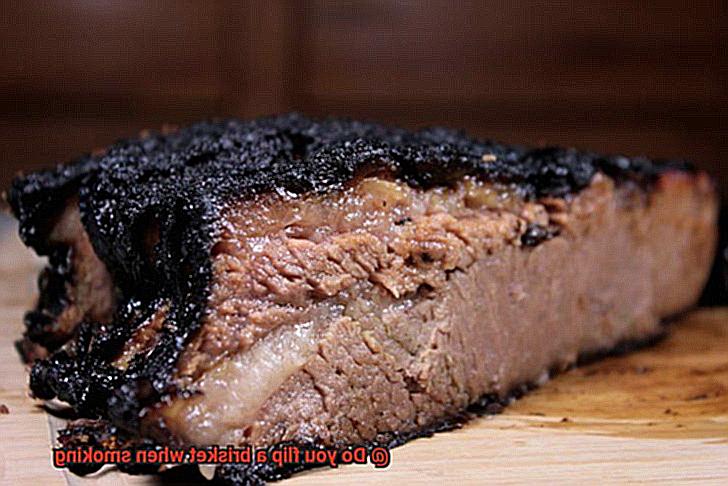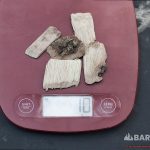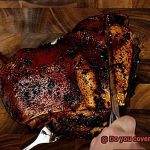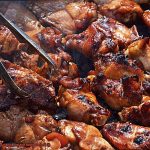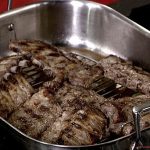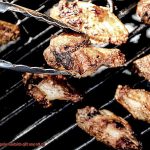As a barbecue aficionado, you know that smoking brisket is an art form. But when it comes to flipping your brisket while smoking, the debate rages on. Some swear by flipping regularly to ensure even cooking and fat rendering, while others argue it disrupts the steady smoke and heat, ruining your product. With so many differing opinions, it can be tough to know which approach to take.
That’s where we come in. In this blog post, we’ll explore both sides of the argument for and against flipping brisket, giving you all the information you need for your next backyard barbecue. From selecting the perfect cut to trimming, seasoning, and cooking just right – we’ve got you covered.
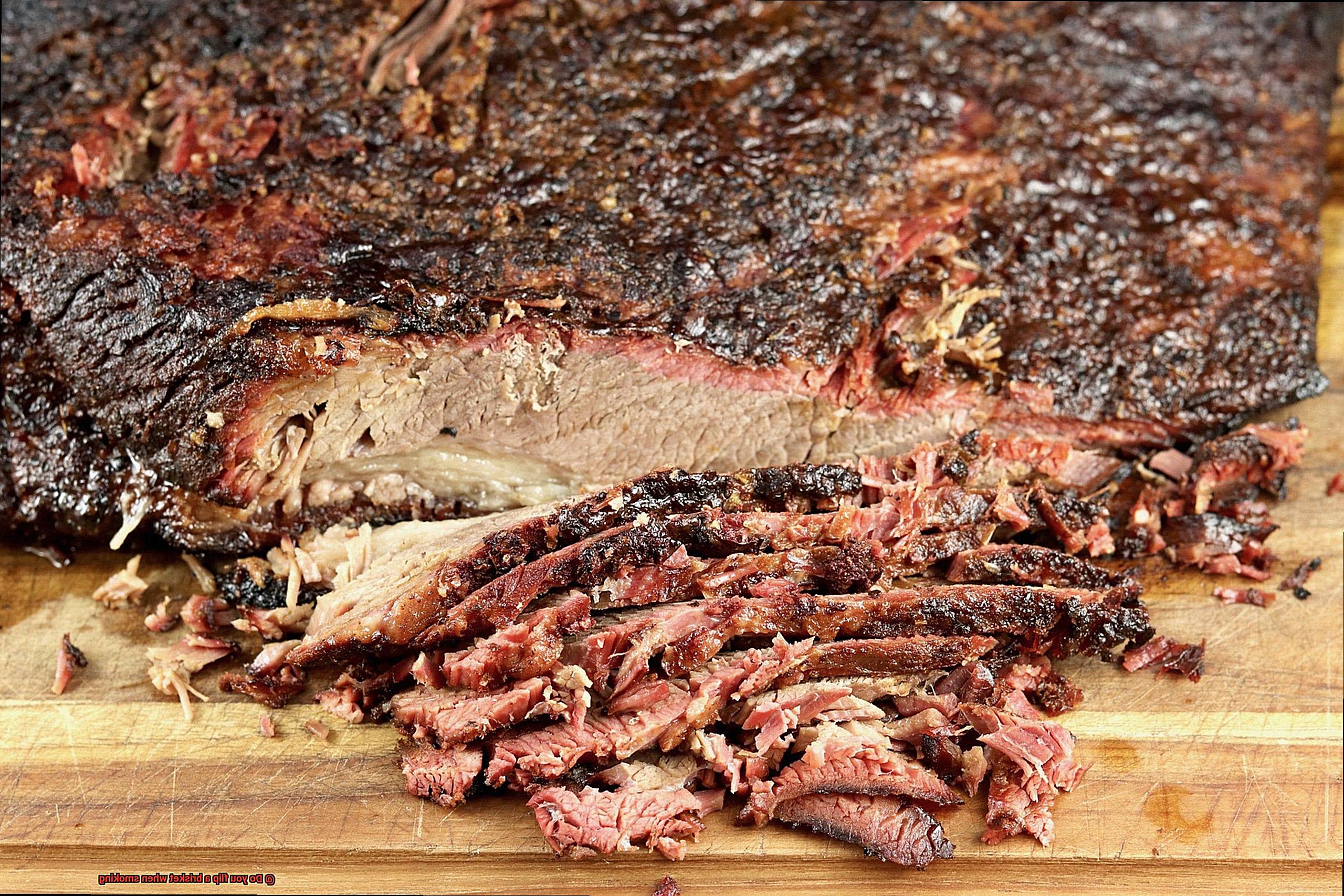
We’ll reveal the secrets to achieving mouth-watering bark with juicy and tender meat that will make your next brisket a hit with friends and family. So whether you’re a seasoned pitmaster or a novice griller looking to up your game, get ready to discover the truth about flipping brisket while smoking: should you flip or not? We’ve got all the answers right here.
Contents
What is Brisket?
Brisket, a tough and fibrous cut of meat, is quickly gaining popularity among grillers and pitmasters alike. This delicious meat comes from the breast or lower chest of a cow and requires slow and low cooking to break down the connective tissues and make it tender. Despite its intimidating reputation, brisket is one of the most versatile meats out there.
There are two parts to a brisket: the point and the flat. The point is the thicker, fattier portion, while the flat is leaner and more uniform in shape. Whether you’re looking for a juicier and more flavorful cut or something easier to handle, brisket has you covered.
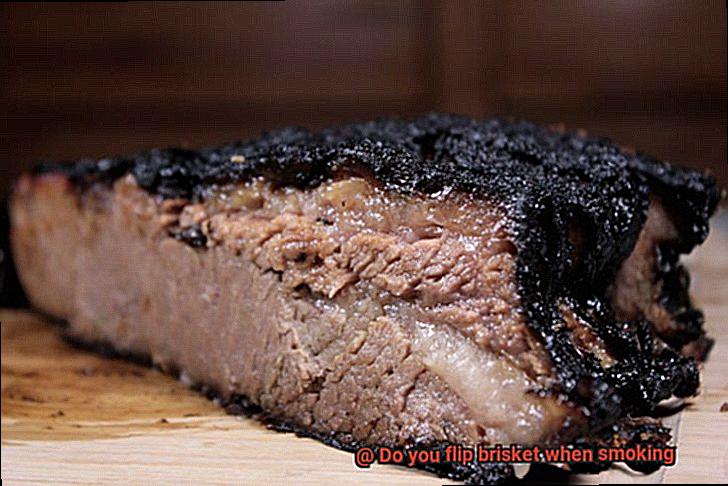
Brisket’s versatility doesn’t end with its different parts. It can be seasoned with various rubs or marinades to enhance its flavor profile, cooked over different types of wood or charcoal to impart smoky flavors, and served in different ways, such as sliced, chopped, or shredded.
One of the most common debates among pitmasters when smoking brisket is whether or not to flip it during the cooking process. While some swear by flipping the meat, others believe that leaving it untouched is key to achieving perfect smoke.
A key factor to consider when deciding whether to flip the brisket is its fat content. If one side has more fat than the other, flipping it may help distribute the fat more evenly and prevent one side from becoming overly greasy or burnt.
Why Do We Flip Brisket?
If you’re new to the game, you may be wondering why some pitmasters flip their brisket while others insist on leaving it untouched. Wonder no more. As an expert on the subject, I’m here to shed some light on the age-old debate.
To answer the question “why do we flip brisket,” let’s break down the reasons why flipping your brisket is crucial in achieving that perfectly cooked, mouth-watering piece of meat.
Reason #1: Even Cooking
When smoking a brisket, the heat comes from one side, usually the bottom. If you don’t flip it, the bottom side will cook faster than the top, resulting in an unevenly cooked brisket. To ensure that your brisket cooks evenly on both sides, flipping it is a must.
This step guarantees that each part of your meat receives equal amounts of heat and smoke, resulting in a perfectly cooked brisket.
Reason #2: Prevent Sticking
Sticking can be a major issue when smoking brisket. It can ruin all your hard work in one fell swoop. But fear not. Flipping your brisket periodically throughout the cooking process can prevent it from sticking and ensure that it cooks evenly.
This technique ensures that each part of your brisket gets equal exposure to heat and smoke, preventing it from sticking to your grill or smoker.
Reason #3: Develops a Crust
Developing a crust is essential for creating that perfect brisket flavor and texture. Flipping your brisket helps create a beautiful crust on both sides of the meat by exposing new surfaces to heat and smoke.
This creates a deliciously crispy exterior while maintaining a tender interior – truly the best of both worlds.
Types of Smokers and Flipping Brisket
Smoking brisket can be a delicious way to cook meat, but it requires some attention and care to get it just right. One of the most common questions people have when smoking brisket is whether or not to flip it. It turns out that the type of smoker used can greatly impact whether or not you should flip the brisket.
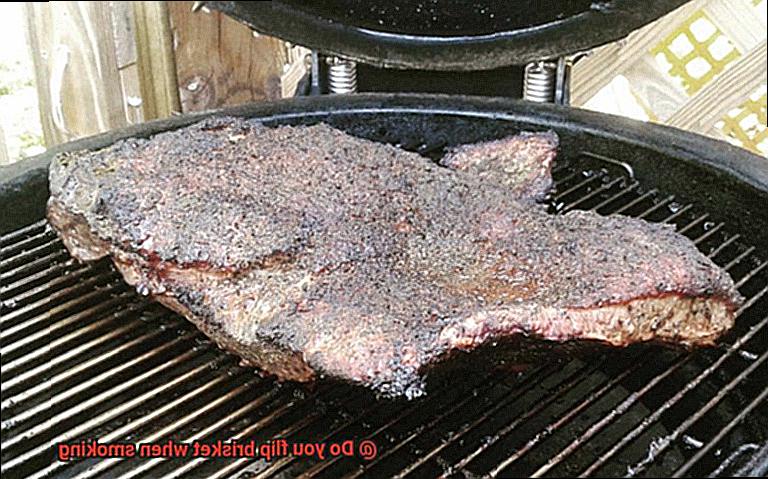
Let’s explore this topic further by diving into the different types of smokers and their respective requirements for flipping brisket.
Charcoal smokers are the most traditional types of smokers, using charcoal as the primary source of fuel. The smoky flavor that comes from charcoal smokers is unmatched, but they require a bit more attention than other types of smokers.
When using a charcoal smoker, it’s recommended to flip the brisket at least once during the cooking process. This helps ensure that the heat is distributed evenly throughout the meat, preventing any burning on one side. Flipping also allows for better smoke penetration, resulting in a more flavorful brisket.
Pellet smokers use wood pellets as the fuel source and have become increasingly popular due to their ease of use and consistent temperatures. With pellet smokers, flipping the brisket is not necessary as the smoker evenly distributes heat throughout the cooking chamber. This means that you can set it and forget it, without worrying about flipping the meat. However, some pitmasters argue that flipping the brisket can help render fat more evenly, resulting in a juicier final product.
Electric smokers are another popular option for smoking brisket. They use electricity to heat up a heating element that then produces smoke. Like pellet smokers, electric smokers do not require flipping the brisket during the cooking process. This makes them an easy and convenient option for those who want to smoke meat without having to tend to a fire. However, some argue that flipping can help achieve a more even bark on the brisket.
Offset smokers are a bit different from other types as they have a firebox attached to one side of the cooking chamber. The heat and smoke from the firebox then flow into the cooking chamber to cook the brisket. When using an offset smoker, it’s recommended to flip the brisket at least once during cooking to ensure even cooking. This is because the heat source is not directly beneath the meat, which can result in uneven cooking if not flipped.
Pros and Cons of Flipping Brisket
When it comes to smoking brisket, there’s a heated debate on whether flipping the meat during the cooking process is necessary or not. Some experts say flipping the brisket leads to even cooking and more flavorful meat, while others believe that leaving the brisket untouched results in a better crust and bark formation. So, what are the pros and cons of flipping brisket?
Pros:
- Even cooking: Flipping ensures that all sides of the brisket cook evenly, preventing overcooking on one side. The heat distribution is more balanced, resulting in a perfectly cooked piece of meat.
- Deeper flavor profile: Flipping allows for more smoke to penetrate the surface, resulting in a richer and smokier taste. Plus, it can create a more pronounced crust on both sides of the brisket.
Cons:
- Disrupts bark formation: Flipping too often or too early in the cooking process can disrupt the formation of a proper bark on the surface of the meat. A weak or non-existent bark can result in less flavorful and less visually appealing meat.
- Fragile meat: Frequent flipping can cause the meat to become more fragile and prone to falling apart.
Ultimately, whether or not to flip your brisket is a personal decision based on your cooking style. If you’re using an offset or charcoal smoker, flipping is necessary for even cooking. If you’re using a pellet or electric smoker, flipping isn’t necessary but can help render fat more evenly for a juicier final product. However, if you do decide to flip your brisket, be mindful of how often you do so and handle the meat carefully to avoid it falling apart.
Fat Content and Flipping Brisket
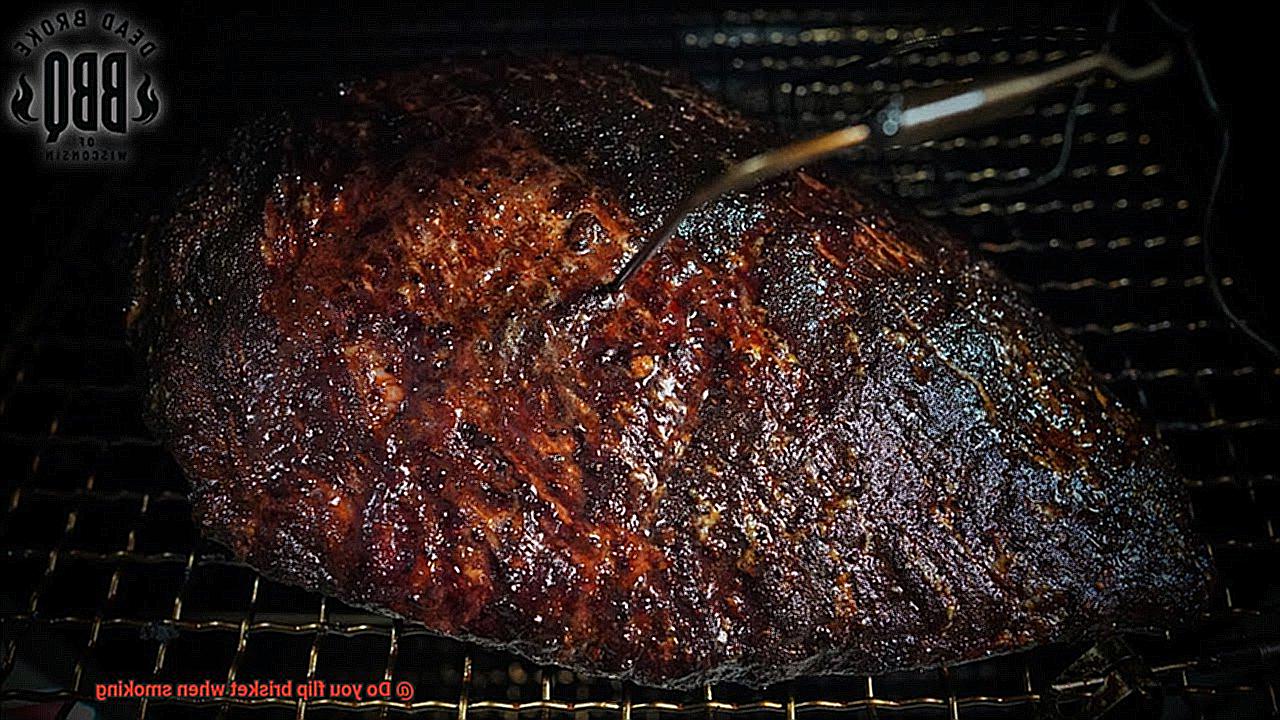
The art of smoking brisket is a sacred ritual, and the age-old debate about whether to flip or not to flip is a crucial consideration. However, fear not. As an expert in this field, I can unveil the secret to this enigma: the fat content of your brisket.
Let’s delve into sub-topics, shall we? A higher fat content means that flipping may not be necessary as the fat will render and provide enough moisture for the meat. Conversely, if your brisket has a lower fat content, flipping it may help distribute the juices and prevent it from drying out. The key here is balance.
But hold your horses. Don’t flip too often. Each time you do so, the brisket loses heat and smoke, which can lead to a less flavorful end product and extend cooking time. Therefore, it’s generally recommended to flip only once during the cooking process unless absolutely necessary.
Now, how do you know when to flip your brisket? This is where experience and personal preference come into play. Monitor the moisture levels of your meat throughout the cooking process. It’s like a dance; you must find the right balance between flipping and letting it rest.
Techniques for Flipping a Brisket
As a seasoned pitmaster, I know that flipping a brisket is a topic of much debate in the smoking community. Some swear by it, while others argue it’s unnecessary or even detrimental to the cooking process. But fear not, for I am here to share with you some techniques that will have you flipping your brisket like a pro.
Firstly, let’s address whether or not to flip your brisket. This decision largely depends on the fat content of your meat. If your brisket has a thick fat cap, then it may not need flipping as the fat will naturally baste the meat as it cooks. However, if your brisket has less fat, flipping can help distribute the juices and ensure even cooking.
So, if you decide to flip your brisket, here are some techniques to help:
- Use two large spatulas or grill forks: This classic method involves lifting and flipping the brisket quickly and confidently. Use two sturdy tools to handle the meat gently and avoid losing any juices or disturbing the bark on the surface.
- Use a wire rack or mesh grilling mat: These tools are great for preventing the brisket from sticking to the grill grates and making it easier to maneuver when it’s time to flip.
- Flip only once: Flipping a brisket too often or too roughly can dry out the meat or make it tough. It’s generally recommended to flip only once during the cooking process, ideally around the halfway point when the brisket has reached an internal temperature of around 160-170°F.
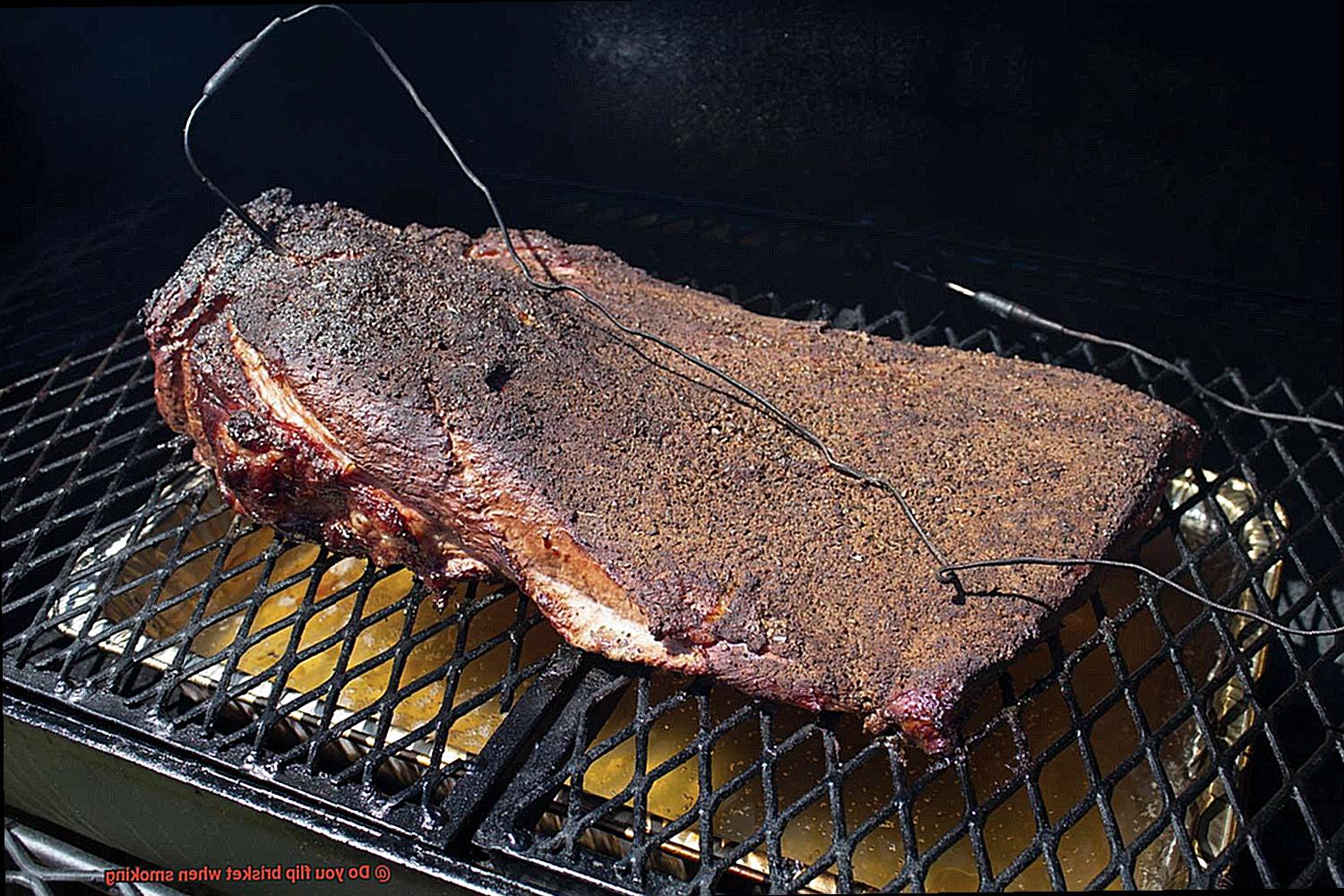
Tips for Perfectly Smoked Brisket
Smoking brisket is an art that requires patience, dedication, and precision. One essential factor that can make or break your brisket is maintaining a consistent temperature. Here are five reasons why consistent temperature is crucial when smoking brisket:
Even Cooking
Consistent heat ensures that your brisket cooks evenly throughout. Fluctuations in temperature can cause some parts of the meat to cook faster than others, resulting in dry and tough spots.
Juicy and Tender Meat
When the temperature is constant, the meat cooks slowly and retains its moisture, resulting in juicy and tender meat that melts in your mouth.
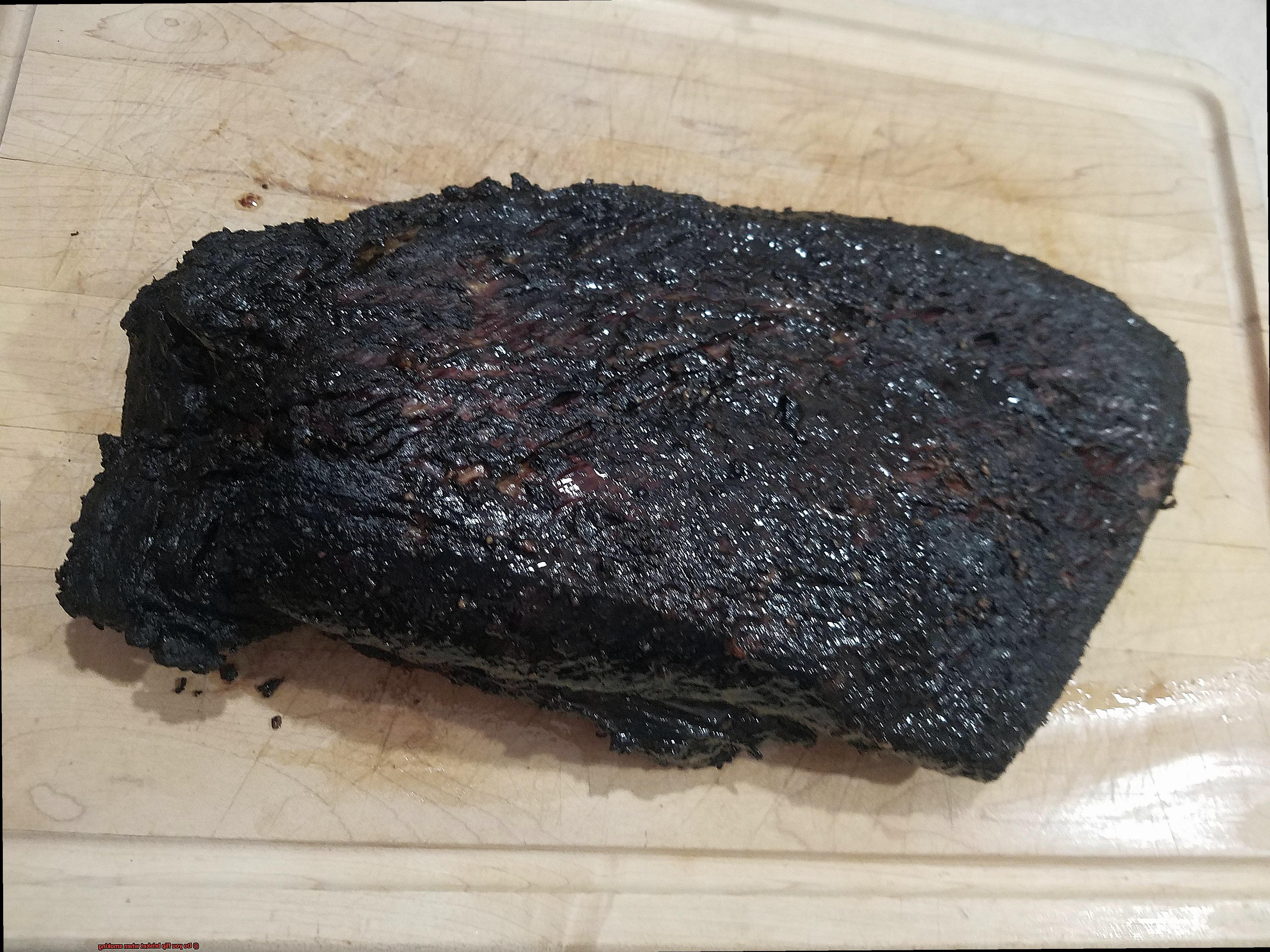
Flavorful Crust
Consistent heat helps to create a delicious crust on the outside of the meat while allowing the smoke to penetrate the meat for maximum flavor.
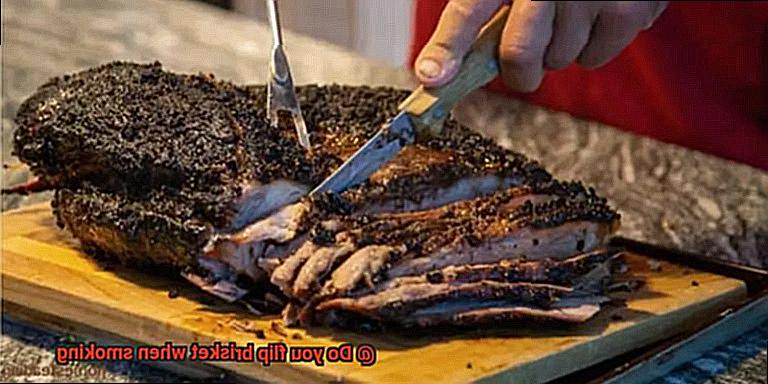
Efficient Cooking
Maintaining a steady temperature saves time and energy by reducing cooking time and preventing overcooking or undercooking.
Reliable Results
Consistent temperature ensures that you get reliable results every time you smoke brisket, making it easier to replicate your success in future smoking sessions.
To maintain a consistent temperature, use a reliable smoker or grill that can maintain a constant heat level. Use digital thermometers to monitor the internal temperature of the meat and adjust the vents and dampers as needed to control the airflow and maintain a steady temperature.
Another important tip to keep in mind is to resist the temptation to flip your brisket too often. Flipping it too frequently can cause it to lose its juices and flavor, leading to dry and tough meat. Instead, let your brisket cook low and slow until it reaches the desired internal temperature before flipping it briefly to finish cooking.
Lastly, be patient when smoking brisket. It takes time for the meat to reach its full potential, so resist the urge to check on it too often or open the smoker too frequently, as this can lead to temperature fluctuations and extended cooking times.
Conclusion
After much debate among pitmasters and grilling enthusiasts, the question remains: do you flip brisket when smoking? Some argue that flipping is necessary for even cooking, while others believe it ruins the final product by disrupting the smoke and heat. Ultimately, whether or not to flip depends on factors such as fat content, smoker type, personal preference, and experience.
To achieve juicy and tender meat with a flavorful crust, maintaining a consistent temperature is crucial when smoking brisket. Digital thermometers are your best friend in monitoring internal temperature and adjusting vents and dampers to control airflow and maintain steady heat levels. But be warned: flipping too often can cause your brisket to lose its juices and flavor.
Whether you’re a seasoned pitmaster or a novice griller seeking to up your game, mastering the art of smoking brisket properly can make all the difference in achieving mouth-watering bark with tender meat.

